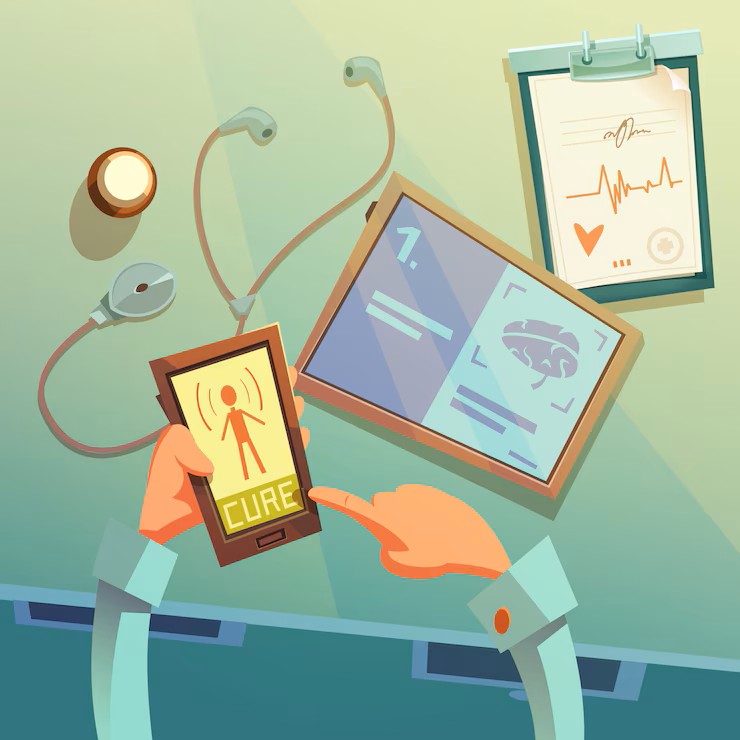
Introduction: Why AI Matters in Acute Care
Artificial intelligence (AI) is rapidly emerging as a transformative force in emergency and critical care medicine, offering solutions to the unique challenges posed by high-acuity, time-sensitive environments. These settings often involve diagnostic uncertainty, overwhelming data volumes, clinician fatigue, and variability in care—all of which can compromise patient outcomes. AI has the potential to significantly mitigate these issues by enabling faster triage, early detection of clinical deterioration, real-time decision support, and streamlined workflows.1
Machine learning (ML) models can synthesize complex data streams from vital signs, imaging, and electronic health records (EHRs) to anticipate conditions such as sepsis or cardiac arrest earlier than conventional methods. Generative AI systems like GPT-4 have shown promise in emergency department (ED) decision-making, accurately predicting hospital admissions and supporting clinicians with explainable reasoning under pressure.2
Despite these advances, deploying AI in acute care remains a frontier challenge. Barriers include the need for diverse and high-quality datasets, seamless integration into fast-paced clinical workflows, and careful attention to ethical considerations such as bias, data security, and informed consent. Nevertheless, as AI tools continue to mature, they are poised to enhance patient outcomes, reduce cognitive burden for clinicians, and redefine acute care delivery worldwide.3
AI in ED Triage and Risk Stratification
In the emergency department, triage is crucial for determining the urgency of care, yet traditional methods can be inconsistent and labor-intensive. AI-driven tools are improving ED triage by leveraging natural language processing (NLP) and machine learning to extract key clinical information and predict outcomes with greater precision.4
NLP algorithms—especially transformer-based models—can automatically interpret free-text triage notes to highlight pertinent symptoms, streamlining documentation and enhancing data accuracy. Simultaneously, ML models trained on structured EHR data have demonstrated strong performance in predicting key outcomes, such as hospital admission, ICU transfer, and sepsis onset. For instance, gradient boosting algorithms have achieved area under the curve (AUC) values exceeding 0.80 for sepsis prediction by integrating vital signs, demographics, and presenting complaints.5
Real-time decision support systems, such as TraumaFlow, have shown efficacy in guiding clinicians during complex cases, improving adherence to protocols and reducing treatment errors. AI triage tools have also outperformed junior clinicians in sensitivity and speed: one multicenter study reported a reduction in average triage time from 6.1 to 3.7 minutes, with an AUC of 0.91 in chest pain evaluation.6,7
Beyond clinical triage, ML frameworks now assist in predicting resource requirements, enabling optimized patient flow and resource allocation in both high-volume and resource-limited environments. Together, these AI-powered solutions are reshaping emergency triage by augmenting clinical judgment with consistent, data-driven decision-making.8,9
Predictive Monitoring in the ICU
In intensive care units (ICUs), continuous monitoring is vital—but often plagued by alarm fatigue due to frequent false positives, which can desensitize staff and delay critical responses. AI offers a compelling solution by providing predictive analytics that identify clinical deterioration before traditional monitoring systems.
Machine learning models such as the VIOSync Sepsis Prediction Index (SPI) can predict sepsis up to six hours in advance, significantly outperforming standard early warning scores. Similarly, AI models are used to anticipate acute kidney injury (AKI) and mortality by analyzing longitudinal data from labs, vitals, and treatments, thereby enabling tailored risk stratification and care planning.10,11
Deep learning frameworks like DeepSOFA utilize time-series physiological data to continuously update acuity scores, offering clinicians dynamic, real-time insight into patient status. For conditions like ventilator-associated pneumonia (VAP), AI-enhanced diagnostic systems integrating imaging and clinical data have improved early detection and diagnostic accuracy.12,13
Emerging bedside alert platforms, including InSight and ICU Insight, further enhance clinical vigilance by synthesizing high-frequency data streams into actionable alerts. These tools reduce alarm burden, support anticipatory decision-making, and contribute to a more efficient ICU workflow.14
The adoption of AI in the ICU thus represents a paradigm shift—from reactive care to proactive, predictive management—offering significant gains in both patient safety and clinical efficiency.
Conclusion: Toward Smarter Acute Care
Artificial intelligence is reshaping emergency and critical care by providing clinicians with real-time, data-driven tools for faster diagnosis, more accurate risk stratification, and proactive patient monitoring. While challenges remain in integration, validation, and ethical deployment, the trajectory is clear: AI has the potential to elevate acute care delivery—making it more precise, responsive, and resilient in even the most high-stakes clinical environments.
Reference:
Artificial Intelligence in Critical Care: Enhancing Decision-Making and Patient Outcomes. Healthcare Bulletin. 2024 Dec 8.
Klang E, et al. Generative AI enhances emergency department decision-making: a Mount Sinai study. J Am Med Inform Assoc. 2024 May 22.
Applications of artificial intelligence in emergency and critical care medicine: enhancing diagnostic precision and patient outcomes. Front Artif Intell. 2024 Oct 4.
Lee S, et al. Deep learning-based natural language processing for detecting medical symptoms and histories in emergency patient triage. J Emerg Med. 2024 Mar; [PMC11158416].
Zhang Y, et al. Interpretable machine learning for predicting sepsis risk in emergency triage. Sci Rep. 2025 Jan; [PMID: 38816648].
Krenz J, et al. TraumaFlow: development of a workflow-based clinical decision support system for polytrauma treatment. Eur J Trauma Emerg Surg. 2024 Dec; [PMCID: PMC11158416].
KTH Royal Institute of Technology & Karolinska Institute. AI symptom-checker outperforms junior clinicians in ED triage. 2 Minute Medicine. 2025 May.
Johnson A, et al. The role of AI in emergency department triage: improving resource allocation and patient outcomes. Front Digit Health. 2025 Apr; [PMC].
Lee J, et al. Development and validation of a machine learning framework for predicting resource needs in emergency department triage. J Med Syst. 2024; [PMID: 39127019].
Patel A, et al. VIOSync Sepsis Prediction Index: AI model for early sepsis detection in ICU patients. medRxiv. 2024.
Alhindi A, et al. Machine learning prediction of AKI outcomes and mortality in ICU patients. Sci Rep. 2023;13(1):10214.
Shickel B, et al. DeepSOFA: A continuous acuity score for critically ill patients using deep learning. Sci Rep. 2019;9(1):1879.
Raut S, et al. AI-based decision support system for ventilator-associated pneumonia diagnosis. Am J Respir Crit Care Med. 2023;207:A1225.
ICU Insight. AI-powered early deterioration prediction for ICU patients. YesChat.ai, 2024.








Post comments